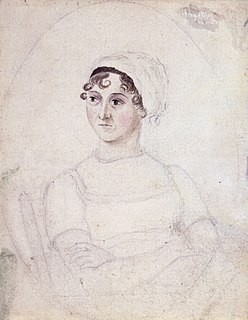
Jane Austen was an English novelist known primarily for her six major novels, which interpret, critique and comment upon the British landed gentry at the end of the 18th century. Austen's plots often explore the dependence of women on marriage in the pursuit of favourable social standing and economic security. Her works critique the novels of sensibility of the second half of the 18th century and are part of the transition to 19th-century literary realism. Her use of biting irony, along with her realism, humour, and social commentary, have long earned her acclaim among critics, scholars, and popular audiences alike.
Martha Lloyd was Jane Austen's dearest friend after Austen's sister Cassandra, and is now known also as a collector of recipes.

Thomas Andrew Knight (1759–1838), FRS, of Elton Hall in the parish of Elton in Herefordshire and later of Downton Castle, was a British horticulturalist and botanist. He served as the 2nd President of the Royal Horticultural Society (1811–1838).
Sir Charles William Rouse Boughton was an administrator in India with the East India Company and subsequently a member of the British House of Commons representing first Evesham and then Bramber.
Sir William Edward Rouse-Boughton, 2nd and 10th Baronet was a Member of Parliament for Evesham in Worcestershire.

Jane Austen lived her entire life as part of a family located socially and economically on the lower fringes of the English gentry. The Rev. George Austen and Cassandra Leigh, Jane Austen's parents, lived in Steventon, Hampshire, where Rev. Austen was the rector of the Anglican parish from 1765 until 1801. Jane Austen's immediate family was large and close-knit. She had six brothers—James, George, Charles, Francis, Henry, and Edward—and a beloved older sister, Cassandra. Austen's brother Edward was adopted by Thomas and Elizabeth Knight and eventually inherited their estates at Godmersham, Kent, and Chawton, Hampshire. In 1801, Rev. Austen retired from the ministry and moved his family to Bath, Somerset. He died in 1805 and for the next four years, Jane, Cassandra, and their mother lived first in rented quarters and then in Southampton where they shared a house with Frank Austen's family. During these unsettled years, they spent much time visiting various branches of the family. In 1809, Jane, Cassandra, and their mother moved permanently into a large "cottage" in Chawton village that was part of Edward's nearby estate. Austen lived at Chawton until she moved to Winchester for medical treatment shortly before her death in 1817.
There have been two baronetcies created for members of the Boughton, later Rouse-Boughton family, one in the Baronetage of England and one in the Baronetage of Great Britain.

Downton Castle is a grade I listed 18th-century country house in the parish of Downton on the Rock in Herefordshire, England, situated about 5 miles (8.0 km) west of Ludlow, Shropshire.
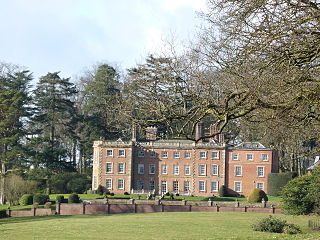
Downton Hall is a privately owned 18th-century country house at Stanton Lacy, near Ludlow, Shropshire. It is a Grade II* listed building.
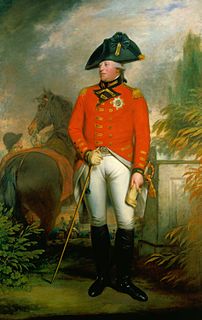
Georgian society in Jane Austen's novels is the ever-present background of her work, the world in which all her characters are set. Entirely situated during the reign of George III, the novels of Jane Austen describe their everyday lives, their joys, and sorrows, as well as their loves, and provide in the process an irreplaceable insight into the period.

Eliza Capot, Comtesse de Feuillide was the cousin, and later sister-in-law, of novelist Jane Austen. She is believed to have been inspirational for a number of Austen's works, such as Love and Freindship, Henry and Eliza, Lady Susan and Mansfield Park. She may have also been the model from whom the character of Mary Crawford is derived.

Oakley Hall is a Georgian manor in Oakley, Hampshire, located 10 km (6.2 mi) to the west of Basingstoke. Completed in 1795 by Wither Bramston, the building is now a hotel and conference centre. It is located in a wooded park intersected by the former South Western railway.
Deirdre Le Faye was an English writer and literary critic. She was born in Bournemouth and raised in Farnborough and Reading, during the bombing raids of the Second World War. After her father died of illness, she left school at 16 and began a secretarial course as a scholarship student. She began work as an administrative assistant for the Department of Medieval & Later Antiquities at the British Museum.
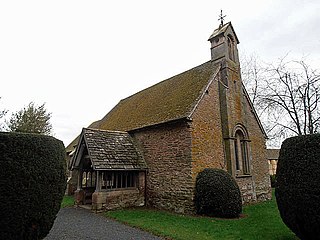
Middleton is a small village in south Shropshire, England. It is located 2.5 miles (4.0 km) northeast of Ludlow town centre, on the B4364 road, in the civil parish of Bitterley.

Charlotte Knight, known after her marriage as Charlotte, Lady Rouse-Boughton, was an English horticulturalist who bred the Waterloo cherry.
Miss Bates is a supporting character in Jane Austen's 1815 novel Emma. Shabby genteel, and a compulsive talker, she is memorably insulted on one occasion by the book's heroine, to the latter's almost immediate remorse.

John Knight (1765-1850) of Lea Castle, Wolverley, of 52 Portland Place in London, and of Simonsbath House, Exmoor, Somerset, was an agricultural pioneer who commenced the reclamation of the barren moorland of the former royal forest of Exmoor in Devon and Somerset, England.
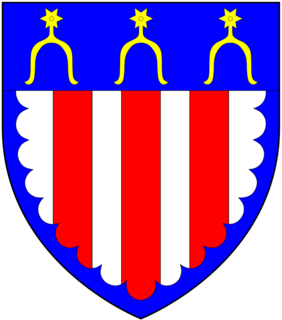
Richard Knight (1659-1745), of Downton Hall, in the parish of Downton on the Rock in Herefordshire, England, was a wealthy ironmaster who operated the Bringewood Ironworks, on the Downton estate, and founded a large fortune and family dynasty.
Anna Austen Lefroy (1793-1872) was the niece of Jane Austen by her eldest brother James Austen, and a contributor to her life-history via the so-called Lefroy MS.
Bavin (wood) was a traditional unit of firewood, a large log, of importance in the Biological Old Regime that preceded fossil fuel.














